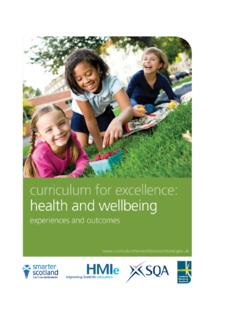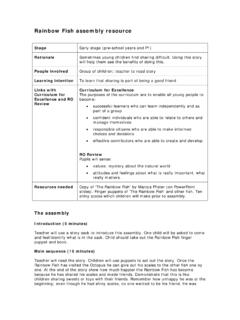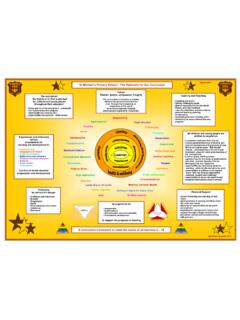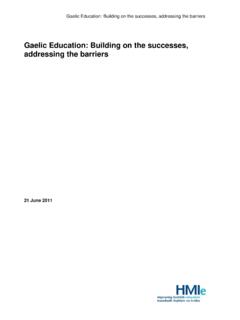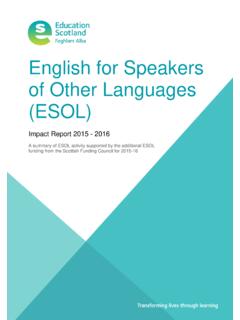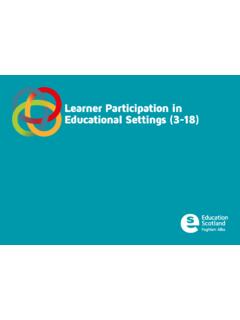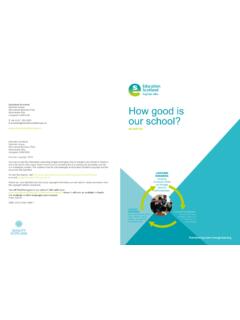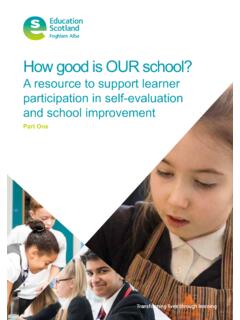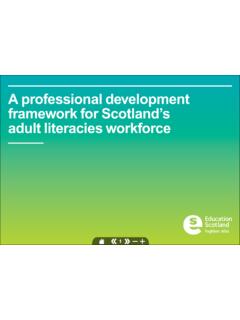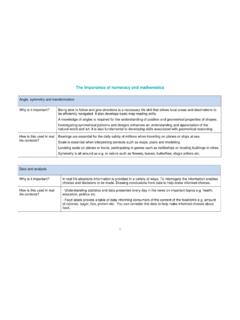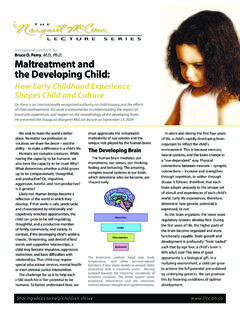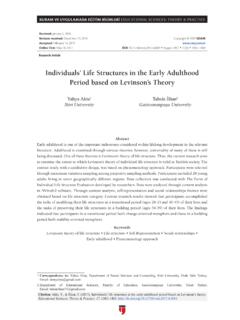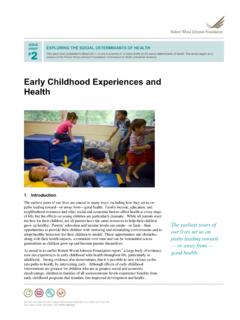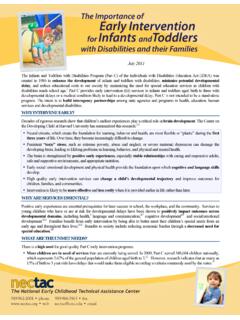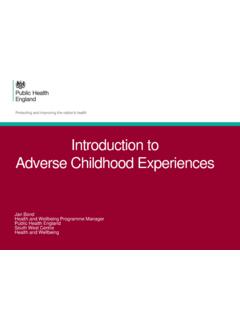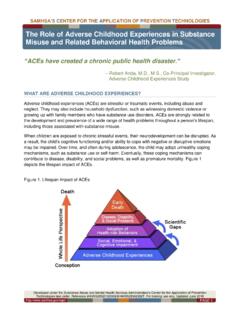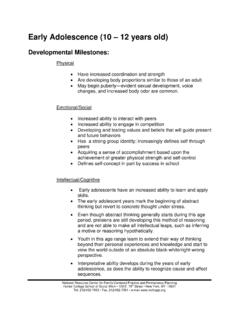Transcription of Table of Contents - Education Scotland
1 Table of Contents To make it easier to use this file, there are links in the Table below. Hover your mouse over the text and then select control' and click to follow the link. Introduction 3. Responsibility of all practitioners 6. Health and wellbeing across learning 7. Literacy across learning 19. Numeracy across learning 38. Curriculum areas 53. Expressive arts 54. Health and wellbeing 71. Languages 100. Classical languages 101. Gaelic (learners) 107. Literacy and English 123. Literacy and G idhlig 146. Modern languages 171. Mathematics 187. Religious and moral Education 211.
2 Religious and moral Education 212. Religious Education in Roman Catholic schools 229. Sciences 252. Social studies 278. Technologies 300. 2. curriculum for excellence Introduction This material is for all who contribute to the Education of Scotland 's children and young people. The experiences and outcomes apply wherever learning is planned. A broad general Education Every child and young person in Scotland is entitled to experience a broad general Education . This broad general Education takes place from the early years to the end of S3 and is represented by learning across all1 of the experiences and outcomes to the third curriculum level together with those selected for study at the fourth, as far as is consistent with each child or young person's needs.
3 Further information on all learner entitlements can be found in Building the Curriculum 3: A framework for learning and teaching. Understanding the curriculum as a whole By exploring the entire set of experiences and outcomes, staff will be able to see the curriculum from the early years to the end of S3 as a whole. Those who teach a particular stage will be able to see where their contributions to a child's learning and development sit in the span of progression. Secondary teachers will also see where they can make contributions to experiences and outcomes from more than one curriculum area.
4 Staff can then plan, with colleagues, their contributions to each learner's Education and also support learners in making connections in their learning. By doing this successfully, they will ensure that each learner experiences a coherent curriculum, achieves the highest possible standards, and is prepared to move successfully into the senior phase and a positive and sustained destination. The framework is less detailed and prescriptive than previous curriculum advice. It provides professional space for teachers and other staff to use in order to meet the varied needs of all children and young people.
5 Why experiences and outcomes'? The title experiences and outcomes' recognises the importance of the quality and nature of the learning experience in developing attributes and capabilities and in achieving active engagement, motivation and depth of learning. An outcome represents what is to be achieved. Taken as a whole, the experiences and outcomes embody the attributes and capabilities of the four capacities. They apply to the totality of experiences which are planned for children and young people, including the ethos and life of the school and interdisciplinary studies as well as learning within curriculum areas and subjects.
6 This means that they apply beyond timetabled classes and into, for example, enterprise and health activities and special events. 1 The exceptions to this statement are where specific sets of experiences and outcomes are specialised: G idhlig, Gaelic (learners) and classical languages and religious Education in Roman Catholic schools. 3. Curriculum areas The guidance is structured under the headings of the eight curriculum areas: Expressive arts Religious and moral Education Health and wellbeing Sciences Languages Social studies Mathematics Technologies Some curriculum areas, for example languages, include more than one set of experiences and outcomes.
7 The guidance also includes separate sections for literacy, numeracy and aspects of health and wellbeing, which are the responsibility of all staff. Principles and practice The principles and practice sections are essential reading for staff as they begin, and then develop, their work with the experiences and outcomes. They describe, for example, the purposes of learning within the curriculum area, how the experiences and outcomes are organised, features of effective learning and teaching, broad features of assessment, and connections with other areas of the curriculum.
8 Assessment is an integral part of learning and teaching. Further guidance on assessment at different stages of the journey through learning will complement the principles and practice papers, emphasising the importance of building on existing practice. Introductory statements The introductory statements within the frameworks of experiences and outcomes provide broad aims of learning within the curriculum area and act as reference points for planning from the early to the fourth levels. Statements of experiences and outcomes The statements of the experiences and outcomes themselves describe national expectations of learning and progression from the early to the fourth curriculum level, during the period from the early years to the end of S3.
9 They do not have ceilings, to enable staff to extend the development of skills, attributes, knowledge and understanding into more challenging areas and higher levels of performance. The experiences and outcomes are set out in lines of development which describe progress in learning. Progression is indicated through curriculum levels, which are explained in the Table below. Level Stage early The pre-school years and P1, or later for some. First To the end of P4, but earlier or later for some. Second To the end of P7, but earlier or later for some. Third and Fourth S1 to S3, but earlier for some.
10 The fourth level broadly equates to SCQF. level 4. Senior phase S4 to S6, and college or other means of study. 4. Appendices In most areas of the curriculum there is an appendix which provides brief explanations to help readers as they interpret the statements. What do the codes mean? The codes provide a unique identification for each statement, purely for ease of reference. As an example: MNU 0-11a MNU 0 11 a is the three letter code indicates that the indicates that the The final letter for numeracy statement is within early statement sits within the indicates the position level 11th line of development of the statement in numeracy within the line of development.
